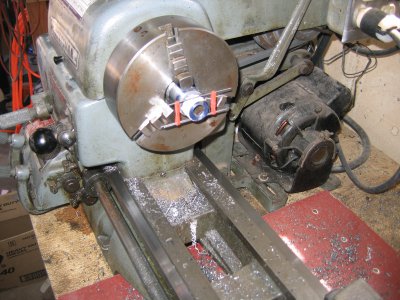- Joined
- Jun 26, 2018
- Messages
- 1,733
@mickri my 3wire set has a booklet with it. I was doing 2 threads per mm so I just take the whole value (M) and subtract 1.7mm (it was actually something like 1.698) and that number should fall within the allowance of the pitch diameter. I almost want to pop for a thread micrometer, if I can find one that covers a large range and isn't a grand.
@JRaut it does make sense to at least consider the minor diameter last for sure. I have threading down but my technique could use some cleaning up, hence the metrology.
@JRaut it does make sense to at least consider the minor diameter last for sure. I have threading down but my technique could use some cleaning up, hence the metrology.

